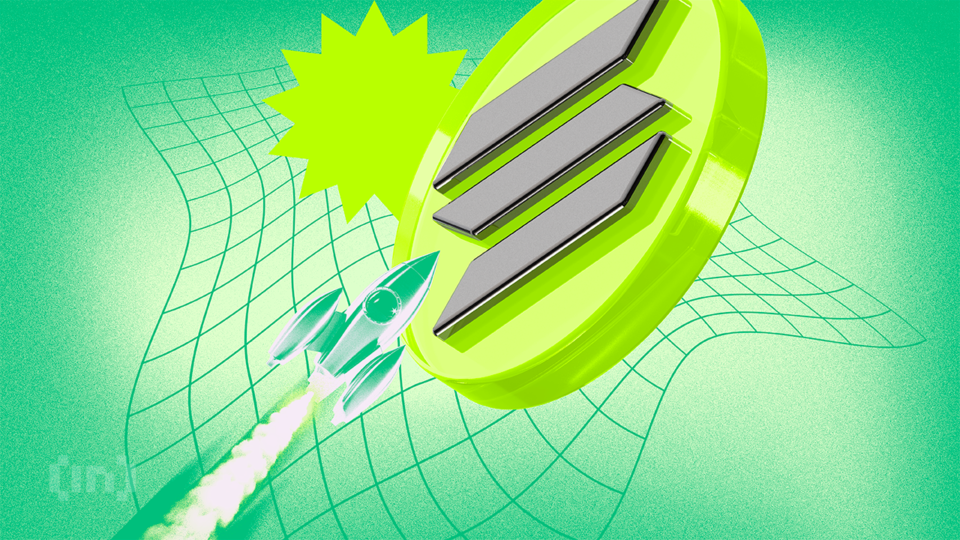Solana has experienced exponential growth since it first entered the market as an alternative Layer-1 blockchain. Though the network’s market capitalization is still significantly smaller than Ethereum, its top contender, this gap has shrunk considerably over the years.
As Solana grows, some wonder whether it will displace Ethereum as the second-largest cryptocurrency behind Bitcoin. In a conversation with BeInCrypto, Juan Pellicer, Senior Research Analyst at IntoTheBlock, said Solana still has to overcome several hurdles before that can occur.
Following Bitcoin, Ethereum has solidified its position as a leading cryptocurrency, pioneering the concept of smart contracts and establishing itself as the dominant platform for decentralized applications.
However, Ethereum’s dominance has been challenged by the emergence of competitors like Solana, which entered the market in March 2020 as an alternative layer-1 blockchain network.
While Ethereum maintains a significant market capitalization advantage over Solana, this advantage has notably shrunk over the years.
Since its launch in March 2020, Solana’s market capitalization reached its first peak in November 2021, when it reached $72.4 billion. One week ago, the token surpassed the $100 billion mark, reaching a new all-time high.
Solana Market Capitalization. Source: CoinGecko.
At the time of writing, Ethereum’s market cap is $392 billion. While its advantage over Solana is significant, some have begun to wonder how long Solana needs to surpass Ethereum.
As the network exceeds key metrics like daily active users, daily transactions, and the number of new addresses created monthly, some say 2025 will be the year Solana takes the second-place trophy.
Though Solana’s success is impressive, according to Pellicer, it still lacks what it takes to overthrow Ethereum.
“While Solana may continue to grow and potentially challenge Ethereum in specific niches, overcoming Ethereum’s entrenched position as the dominant platform in the immediate future is still unlikely, though the competitive landscape is dynamic and evolving,” he said.
Pellicer considered many factors before coming to that conclusion.
High Throughput and Low Transaction Costs Maintain Solana’s Competitiveness
Solana and Ethereum boast particular strengths that, in turn, attract different audiences.
Ethereum’s continued dominance is largely due to its established trust, widespread adoption, and ongoing development efforts. As the first platform to enable the development of decentralized applications, Ethereum continues to lead the market, powering most decentralized finance (DeFi) projects and hosting major non-fungible token (NFT) marketplaces.
“Ethereum’s infrastructure is unmatched in economic security, maintaining a flawless uptime record since inception, which fosters unparalleled trust for institutional and high-value applications. Its DeFi ecosystem remains the most mature, with pioneering protocols setting industry standards, though competitors like Solana are rapidly closing the gap with faster, cheaper alternatives,” Pellicer told BeInCrypto.
Solana’s competitive edge comes from its high throughput and low transaction costs. The network uses two consensus mechanisms: Proof-of-History (PoH) and Proof-of-Stake (PoS).
The combination of PoS and PoH allows individual nodes to validate the entire blockchain using only a small piece of information. This is possible because PoH creates a verifiable history of transactions, which means a node doesn’t need to be constantly connected to the network to verify its validity. In turn, transaction speeds are much faster.
Originally running on a Proof-of-Work (PoW) consensus mechanism, Ethereum transitioned to PoS in September 2022. Regardless, the network often suffers from congestion and slow transaction speeds.
While Ethereum can only process around 15 transactions per second, Solana can handle over 2,600.
“This results in a smoother user experience, particularly for high-frequency applications and retail users. This technological differentiation, coupled with effective marketing and a vibrant ecosystem of applications focused on speed and affordability, has fueled Solana’s rapid growth and market cap increase, attracting users and projects seeking alternatives to Ethereum’s higher gas fees and slower transaction finality,” Pellicer explained.
However, Ethereum has other advantages that outweigh Solana’s speed.
Ethereum Excels in DeFi
Since its launch in 2015, Ethereum has become a widely used blockchain platform for developers and enterprises.
The platform’s smart contract functionality has enabled the creation of numerous decentralized applications (dApps), contributing to the growth of ecosystems focused on DeFi, gaming, and NFTs.
Ethereum’s DeFi TVL. Source: DappRadar.
Today, Ethereum’s DeFi total value locked (TVL) stands at nearly $124 billion.
“This creates deep liquidity, robust infrastructure, and a rich ecosystem, making it difficult for newer platforms like Solana to replicate quickly. This entrenched network effect provides Ethereum with significant inertia and competitive advantage, as users and developers benefit from the existing infrastructure, community support, and established protocols within the Ethereum ecosystem,” Pellicer said.



